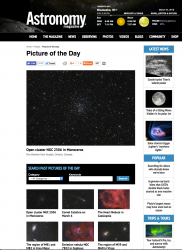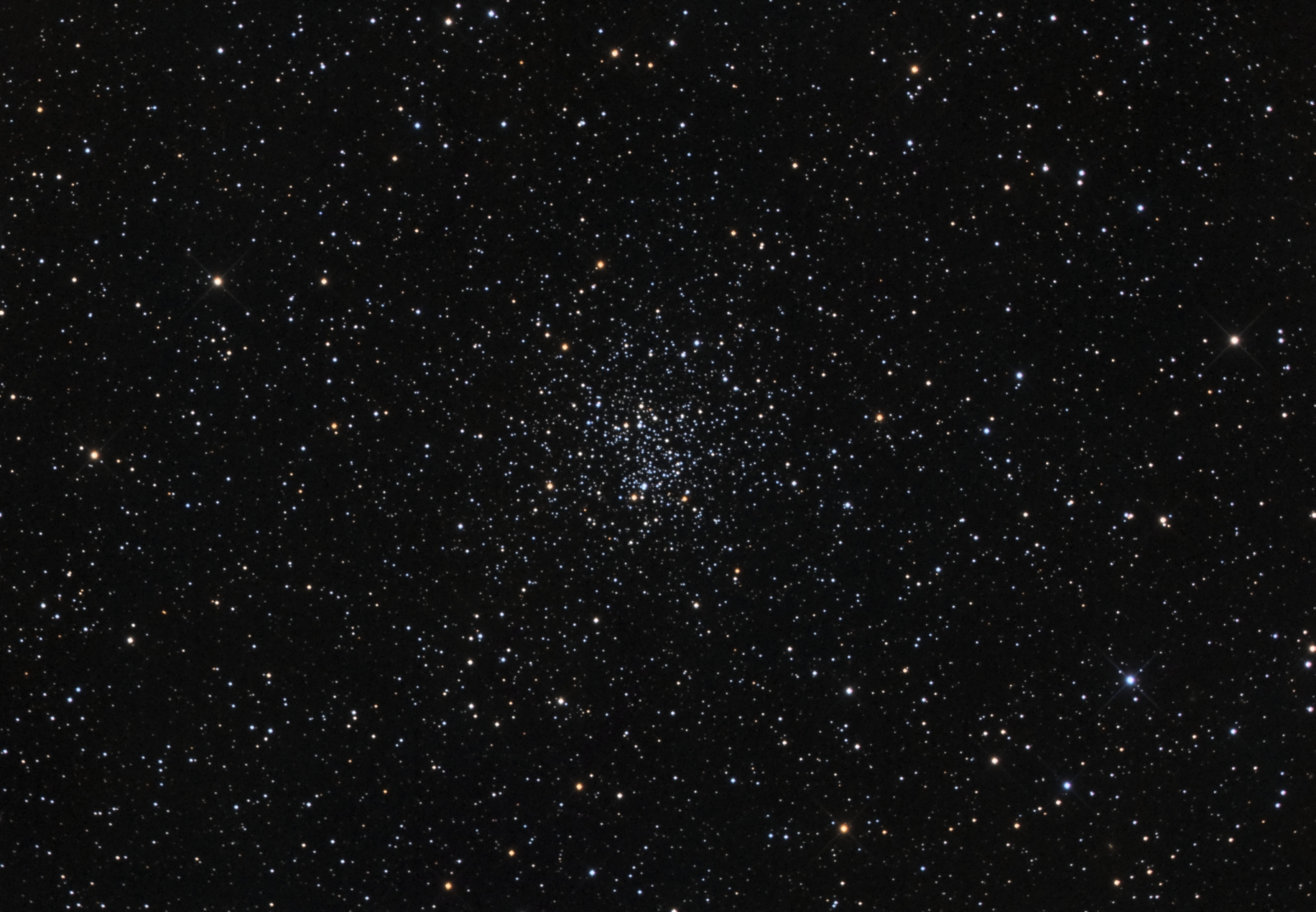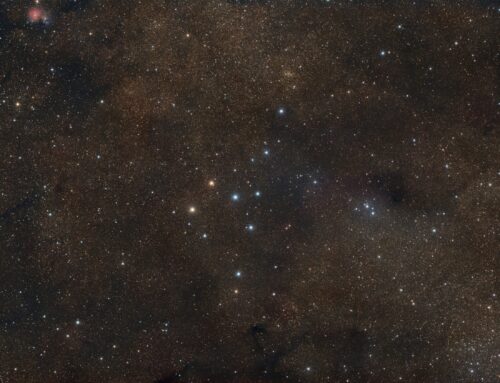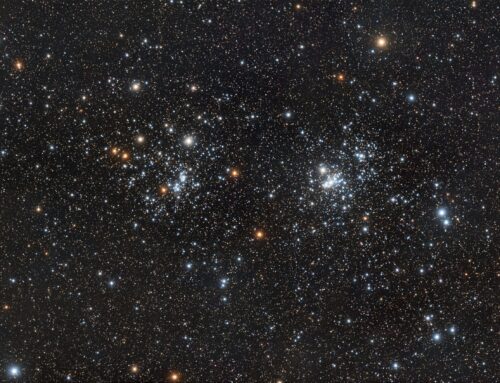NGC2506 Open Cluster
Click image for full size version
March 19, 2016, Picture of the Day at astronomy.com March 24, 2016
 NGC2506 is an open cluster located in the constellation Monoceros, the Unicorn. There are many beautiful objects in this constellation (including the Rosette Nebula), so NGC2506 (like most open clusters) often gets overlooked. This cluster lies about 11,300 light years from us and includes hundreds of stars. It is interesting that it is difficult to discern where the cluster ends and the background field of stars begins; the cluster just seems to fade away until it blends in.
NGC2506 is an open cluster located in the constellation Monoceros, the Unicorn. There are many beautiful objects in this constellation (including the Rosette Nebula), so NGC2506 (like most open clusters) often gets overlooked. This cluster lies about 11,300 light years from us and includes hundreds of stars. It is interesting that it is difficult to discern where the cluster ends and the background field of stars begins; the cluster just seems to fade away until it blends in.
Following my own advice, I acquired this image in a single moonlit night.
Tekkies:
SBIG STL-11000M camera, Baader RGB filters, 10″ f/6.8 ASA astrograph, Paramount MX. Guided with QHY5 camera and and an 80 mm f/6 guide scope. Focused with FocusMax. Acquisition and guiding with TheSkyX. Automation with CCD Commander. All prep-processing and processing in PixInsight. Shot from my SkyShed in Guelph, Ontario. Gibbous moon. Very good transparency and poor seeing throughout.
10x5m R, 9x5m G, and 10x5m B, all unbinned frames (total=2hr25m).
RGB
Creation and cleanup: R, G and B masters were combined with ChannelCombination, and the resulting RGB image was cropped and processed with DBE, followed by ColorCalibration.
Linear Noise Reduction: MultiscaleLinearTransform was used to reduce noise in the background areas of the RGB image. Layer settings for threshold and strength: Layer 1: 3.0, 0.5 Layer 2: 2.0, 0.39 Layer 3: 1.0, 0.25 Layer 4: 0.5, 0.1. A mask was used to protect high signal areas.
Stretching: HistogramTransformation was applied to make a pleasing yet bright RGB image.
Synthetic Luminance
Creation and cleanup: The R,G and B masters were combined using the ImageIntegration tool (average, additive with scaling, noise evaluation, iterative K-sigma / biweight midvariance, no pixel rejection) to create the SynthL channel. The image was cropped to match the RGB and DBE was applied.
Deconvolution: A copy of SynthL was stretched to use as a deconvolution mask. A star mask was made from unstretched SynthL to use as a local deringing support. Deconvolution was applied (50 iterations, regularized Richardson-Lucy, external PSF made using DynamicPSF tool with about 20 stars; local deringing at 70% and global dark deringing at 0.01).
Linear Noise Reduction: MultiscaleLinearTransform was applied to reduce the noise. Layer settings for threshold and strength: Layer 1: 3.0, 0.6 Layer 2: 2.0, 0.5 Layer 3: 1.0, 0.4 Layer 4: 0.5, 0.15
Stretching: HistogramTransformation was applied to make an image with similar brightness to the RGB image. TGVDenoise was applied and the image was re-stretched to reset the black point.
Combining SynthL with RGB:
The luminance channel of the RGB image was extracted, processed and then added back into the RGB image as follows:
1. Set RGB channels equal using RGBWorkingSpace.
2. Extract luminance from the RGB image.
3. Apply LinearFit using SynthL as the reference.
4. Use ChannelCombination in Lab mode to replace the RGB’s luminance with the fitted luminance from step 2.
5. LRGBCombine was then used to make a SynthLRGB image.
Final Processing
Contrast, brightness and colour saturation were adjusted in several iterations with the Curves tool, with separate adjustments for background and stars using a mask.
Image scale is about 1.1 arcsec per pixel for this camera / telescope combination.







Leave A Comment